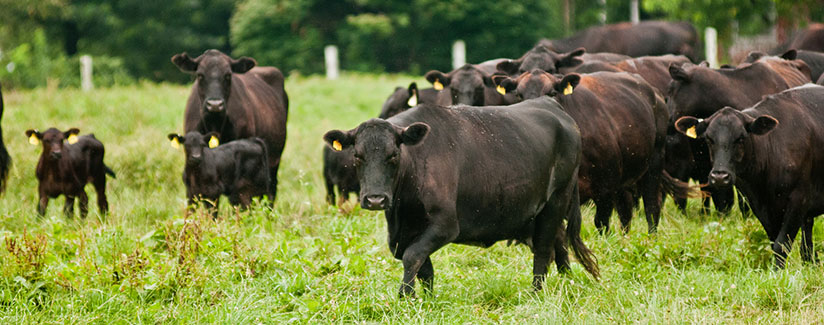
Hormones in Beef?
Recently we received a question from Maddee asking, “What is the hormone level (estrogen) in beef compared to that of other animal protein products? With that, how does an animal that has been implanted with synthetic hormones (estrogen) excrete those hormones?”
To answer Maddee’s question, we contacted Dr. Ann Macrina from Penn State.
Dr. Macrina:
First, let me say that all animals, like people, have hormones that are naturally present in their bodies. These hormones are required for normal life-supporting functions. Your concern appears to revolve around beef animals that have had hormone implants to improve growth efficiency.
- A 3-ounce serving of beef from a steer that had a hormone implant contains 1.2 ng of estrogen while that from a steer with no implant contains 0.9 ng.
- Milk is another animal protein product that has been well studied regarding estrogen levels. One serving of whole milk contains about 3 ng of active estrogen, and skim milk would contain less.
- To put these figures in perspective:
- Prepubertal girls produce 54,000 ng of estrogen per day
- Adult women produce 630,000 ng per day
- Pregnant women produce a staggering 19,600,000 ng per day
- Birth control pills contain 20,000 to 30,000 ng of estrogen
- One dose of hormone replacement therapy contains 1 million ng of estrogen
Synthetic estrogens are excreted via the same mechanism as natural estrogens. They are degraded in the liver and kidney, and in the process are made more water soluble so they can be excreted more easily. Birth control pills and hormone replacement therapy used by millions of women every day also contain synthetic estrogens. The advantage of synthetic hormones for both humans and animal is that they don’t have to be administered as often as natural hormones.
Do you have a question for one of our experts? Feel free to submit a question!
“20130712-AMS-LSC-0453” by USDA is licensed under CC BY.


























